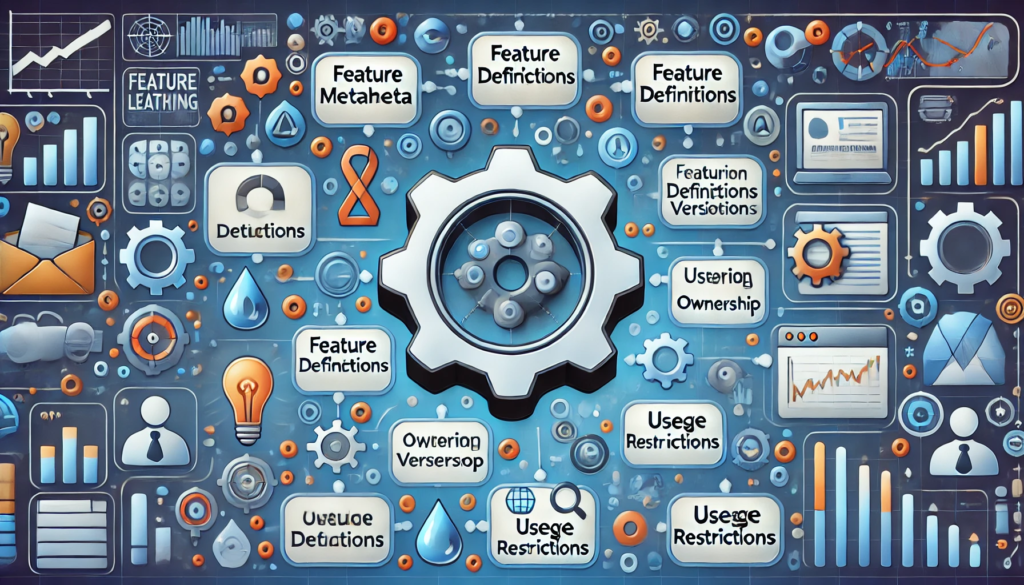comprehensive guide to Metadata in Machine Learning: The Backbone of Reliable Systems 2024

In machine learning (ML), metadata acts as the glue that holds complex systems together. From datasets to features, labels, and pipelines, metadata provides the context needed to manage, track, and optimize ML workflows effectively. Despite its importance, metadata systems are often overlooked during the initial development of ML infrastructure—an oversight many organizations regret later.
This blog delves into the types of metadata, its role in machine learning, and best practices for building metadata systems.
What is Metadata?
Metadata is data about data. In the context of machine learning, metadata includes:
- Dataset metadata: Information about the origin, storage, and usage restrictions of datasets.
- Feature metadata: Details about feature definitions, versions, and use constraints.
- Label metadata: Insights into label definitions, sources, and confidence scores.
- Pipeline metadata: Logs and artifacts from the model training and serving pipeline.
Key Types of Metadata in Machine Learning

1. Dataset Metadata
Dataset metadata ensures traceability and compliance by documenting:
- Provenance: The source of the data (e.g., logs, external providers).
- Storage Location: Where the dataset is stored and any related references.
- Ownership: The team or individual responsible for the dataset.
- Creation Date: When the dataset was first created or last updated.
- Use Restrictions: Licensing or governance constraints on the dataset.
2. Feature Metadata
Feature metadata tracks how features are defined, maintained, and used:
- Version Definitions: A reference to the code or process that created the feature.
- Ownership: The person or team responsible for maintaining the feature.
- Change History: The creation and update history of the feature.
- Usage Restrictions: Legal or ethical limitations on feature use (e.g., age and gender in regulated industries).
3. Label Metadata
Label metadata ensures transparency and reliability in supervised learning:
- Versioning: Tracks changes to labels over time.
- Source: The origin of the label (e.g., human annotators, algorithms).
- Confidence: Confidence levels for each label, especially for auto-labeled data.
- Use Cases: Helps determine the labels’ appropriateness for specific training tasks.
4. Pipeline Metadata
Pipeline metadata is critical for debugging and reproducing results:
- Artifacts: Intermediate outputs generated during training.
- Pipeline Runs: Logs and data from specific training jobs.
- Binaries: Version information for the tools and scripts used.
Systems like TensorFlow Extended (TFX) automatically capture pipeline metadata, simplifying tracking and debugging.
Choices for Metadata Systems

1. Single Unified System
A single metadata system aggregates data from all sources, simplifying correlation and reporting.
Advantages:
- Unified reporting and analysis.
- Centralized management.
Challenges:
- Complex schema design.
- Backfilling and stabilizing a large system can be resource-intensive.
2. Decoupled Systems
Separate metadata systems manage datasets, features, labels, training, and serving independently.
Advantages:
- Modular development and easy updates.
- Fault tolerance: An issue in one system doesn’t affect others.
Challenges:
- Requires processes to join data across systems for analysis.
- More complex integration.
Best Practices for Metadata Management
- Automate Metadata Collection:
- Use tools like TFX or MLflow to capture metadata automatically.
- Version Everything:
- Track versions for datasets, features, and labels to maintain consistency.
- Focus on Traceability:
- Ensure that metadata links every component, from raw data to trained models.
- Prioritize Security:
- Protect sensitive metadata, especially for regulated industries.
- Invest Early:
- Build metadata systems during the initial phases of ML infrastructure development.
The Role of Metadata in Machine Learning

Metadata is indispensable for:
- Debugging:
- Simplifies identifying issues in models by providing historical context.
- Compliance:
- Ensures datasets and features meet regulatory requirements.
- Collaboration:
- Facilitates communication among teams by providing a shared knowledge base.
Future Trends in Metadata Systems

- AI-Driven Metadata Management:
- Automating metadata creation and linking using machine learning.
- Real-Time Metadata:
- Dynamic metadata systems for real-time model monitoring.
- Cloud-Native Solutions:
- Scalable metadata platforms integrated with cloud environments.
Conclusion
Metadata is the backbone of reliable and scalable machine learning systems. By capturing and managing information about datasets, features, labels, and pipelines, metadata systems enable traceability, compliance, and collaboration across ML workflows. Investing in robust metadata systems early ensures smoother scaling and better model performance in the long run.
Are you ready to unlock the power of metadata in your ML workflows? Start building smarter systems today!